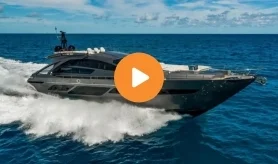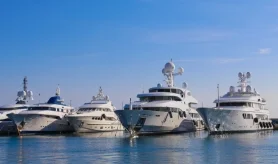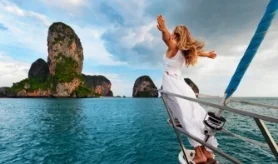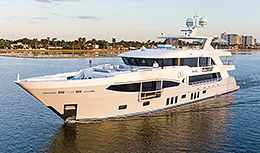- Alaskan Yachts
- Azimut Yachts
- Back Cove Yachts
- Beneteau Yachts
- Benetti Superyachts
- Bertram Yachts
- Boston Whaler
- Broward Yachts
- Buddy Davis Sportfish
- Burger Yachts
- Cabo Yachts
- Catamarans
- Carver Motoryachts
- Center Console
- Chris-Craft Yachts
- Cruisers Yachts
- DeFever Trawlers
- Dufour Sailboats
- Fairline Yachts
- Feadship Yachts
- Ferretti Yachts
- Formula Yachts
- Fountaine Pajot Cats
- Grady-White
- Grand Banks Trawlers
- Hargrave Yachts
- Hatteras Yachts
- Hinckley Picnic Boats
- Horizon Yachts
- Hydra-Sports
- Intrepid Boats
- Jarrett Bay Sportfish
- Jeanneau Yachts
- Kadey-Krogen Trawlers
- Lazzara Yachts
- Lekker Boats
- Luhrs Sportfish
- Marlow Yachts
- Maritimo Yachts
- Marquis Yachts
- Mazu Yachts
- McKinna Motoryachts
- Meridian Yachts
- Midnight Express
- MJM Yachts
- Mochi Craft
- Neptunus Motoryachts
- Nordhavn Trawlers
- Nordic Tugs
- Numarine Yachts
- Ocean Alexander Yachts
- Ocean King
- Offshore Yachts
- Outer Reef
- Oyster Sailing Yachts
- Pacific Mariner Yachts
- Palmer Johnson Yachts
The New River in Florida: At the Center of It All
The essential New River in Florida, a river that almost wasn’t…

Most rivers are meanderers, flowing great distances to lower ground along ancient natural depressions to lakes or the sea. On the other hand, the New River is wholly contained in Florida’s Broward County, a factor that is in itself unusual. And as all of Broward County is just a few feet above sea level, there isn’t much in the way of gravitational flow. The New River is, in geological terms, new, yet much older than the man-made canals and sea walls would suggest.
All South Florida sits on a seeping soft oolitic limestone floor above a giant freshwater aquafer. Historically, freshwater flowed south from the springs of Central Florida to Lake Okeechobee then spread out across a marshy basin called the Everglades – aptly named the River of Grass by Marjory Stoneman Douglas – to drain into the Atlantic and the Gulf of Mexico.
Over time, the basin began to stand higher than the surrounding sandy loam, retaining significant water. During heavy rains, it would spill beyond its rim forming creeks and push through weak spots below ground making temporary springs.
“All South Florida sits on a seeping soft oolitic limestone floor above a giant freshwater aquafer.”
For centuries, possibly more than 2,000 years, the original native Glades Culture people, and later the Tequestas, adjusted by living on high spots called hammocks. During one rain period (exactly when is not known because the earliest inhabitants had no written language), the terrified people experienced a prolonged shuddering and shaking of the earth and sounds as loud as crashing thunder.
When the phenomenon ceased and daylight came, they discovered that, overnight, in front of their huts, was a distinct deep river of clear water flowing toward the coast, creating a sound (a narrow passage of water between the mainland and an island) behind the beach. The Indians called it himmarshee or “new water”. Geologists today agree that it probably did happen overnight due to a shallow earthquake caused by the collapse of the limestone or coral roof of an underground river draining from the Everglades.
But as the entire system was more estuary than river, the meander of the river’s two forks and a smaller stream called the Tarpon River, along with the inlet between the ocean and the sound, shifted almost constantly, much to the chagrin of the Spaniards who tried to fix it on their maps in the 1500s. It may have first been called Rio Salado (salty river) by the Spanish in 1513, but it was identified as R. Nova on maps dating to 1631.
It was a wild thing with surprising fluctuations in depth, whirlpools and eddies indicating submerged springs, and on-again-off-again inlets breaking through the sand barrier anywhere from Hillsborough to Dania Beach under the influence of hurricanes. Its first permanent inlet was not cut until 1930, establishing Port Everglades.

The name Fort Lauderdale came from the structure built to defend white settlers during the Second Seminole Indian war in 1838 and was named for its commander, Army Maj. William Lauderdale. Despite the fort, for many years the area was simply called New River Camp for the place where travelers gathered waiting to ferry across the river on their way to or from Miami.
Frank Stranahan, who arrived in 1893, managed the tent camp near today’s U.S. 1 tunnel where passengers on the mule-drawn wagons on the “hack line” from Lantana to Lemon City (North Miami) spent the night and crossed the new river. A round trip cost $15. Although the railroad arrived in the 1890s, the first bridge over the New River was not constructed until 1904. Just to the west, Stranahan established his trading post and later his home with his wife, Ivy, which still stands at 335 SE 6th Avenue, the banks of the river being preferable to the mangrove-choked edges of the sound.
Fort Lauderdale seemed to attract people with a can-do attitude. When the county told Stranahan it couldn’t afford $500 to build a bridge over the Tarpon River in 1923, Stranahan chided them saying he could build it for $80. They scoffed and told him to go ahead. So, he did, with one helper, thus establishing western access to the growing town. Cost of materials? $45.
Despite the two bridges, most goods and people traveled by boat. One of the early (1933) boat repair facilities on the river was C.R. Breckenridge Boat Yard and Lauderdale “All South Florida sits on a seeping soft oolitic limestone floor above a giant freshwater aquafer.” 18 — 19 Yacht Basin, next to the rail line that parallels today’s I-95 bridge. Henry Summerfield, who had sailed from Toledo to Fort Lauderdale, traded his boat for the yard in 1940 and renamed it Summerfields.
During WWII he serviced Navy patrol boats, many of which were built at Paul Dooley’s Basin and Dry Dock across the river, which had opened in 1937. Dooley’s delivered 100 ships for the U.S. effort during WWII, from 110-foot sub chasers to harbor patrol and air-sea rescue boats.

Like Summerfield, Bob Cox arrived on his boat in 1946 and discovered that there was no dockage for deep draft sailboats except for the port and one spot at the end of 15th Street where the Navy had a secret torpedo test site. Looking for opportunities, Cox guessed that the city’s waterfront would be lined with homes and docks one day and that the area was a natural for recreational boating. With no fuel docks between Miami and Palm Beach, he saw his opening – establishing a commercial fuel dock at the former torpedo site on what is now called the Intercoastal Waterway (ICW) using tanks the Navy had installed.
In 1949, he added a boat dealership and more docks. Not only did his Lauderdale Marina become a prominent fueling spot, but his Boston Whaler dealership and service facility was also one of the most successful on the East Coast. Cox served on the City’s Marine Advisory Board and encouraged the city to deepen its shallow canals and build marinas. A champion of promoting the city as the Yachting Capital of the World, he served as mayor for five years
No doubt the largest player in the New River’s maritime development was Frank Denison, who spotted Dooley’s while honeymooning with his wife, Gertrude. He bought it and renamed it Broward Marine. Denison, too, obtained a Navy contract from 1950 to 1958 to build minesweepers; he began building yachts in 1956, first using wood and then switching to aluminum.
The Denisons built a home on the site and raised their family there. Gertrude started her own business called Yacht Interiors. With Broward Marine launching ever more yachts, an entire network of services and suppliers sprung up in the neighborhood. With so many services and suppliers, Fort Lauderdale became a natural stopover for boats heading to or from the Caribbean.
“No doubt the largest player in the New River’s maritime development was Frank Denison, who spotted Dooley’s while honeymooning with his wife, Gertrude.”
Most of those countless suppliers were mom-and-pop businesses in the 1950s and ’60s. Cox and other boating pioneers, including the Denisons and the local Evinrude and Chris-Craft dealers, founded the Marine Industries Association in 1961. In 1966, the Bradford family opened hurricane-safe storage and yacht repair just about as far up the south fork as possible. This was followed a few years later by the former boat painter Bob Roscioli, who established the westernmost service facility in 1969. Elmer Strauss, an ex-Pacemaker executive, helped establish a number of those smaller operations from the 1970s, including Cable Marine, BOW and D.S. Hull.
There were, of course, larger cities and ports in Florida, but the heart of Florida’s marine industry was established on the banks of the New River. The river has seen a lot of changes: yachts and jet skis replaced dugouts and wooden barges. Broward Marine is now Lauderdale Marine Center, one of the largest yacht service facilities in Florida and some of the smaller companies are now corporate-owned. The Marine Industries Association is now a tri-county organization and the largest marine trade group in the U.S. In Broward County alone, the estimated income from the marine industry is about $9 billion.

Fort Lauderdale, Florida
After years of neglect, in 1986 the city and county decided to focus on its waterfront roots and work to connect the city’s arts and entertainment district, the historic downtown area, and the Las Olas shopping and beach district. The centerpiece was the Riverwalk project, which runs along the New River from the Broward Center for the Performing Arts to the Stranahan House, extending to chic Las Olas Boulevard. The Museum of Art | Fort Lauderdale and the Museum of Discovery and Science became cornerstones of the riverfront rival. Upscale high-rise residential towers followed, making the New River, once again, the center of life in Fort Lauderdale.

Request a Copy [FRANK Issue 2]
From intelligent debate to cutting-edge science, and risky sports to surreal charter experiences, FRANK does not shy away from the awkward, controversial, or questionable details. Brazen at times, amusing in spirit, and always transparent in discussion, the focus is on discovering new angles and enjoying every minute. And, of course, always being ‘frank’ about the conclusions.
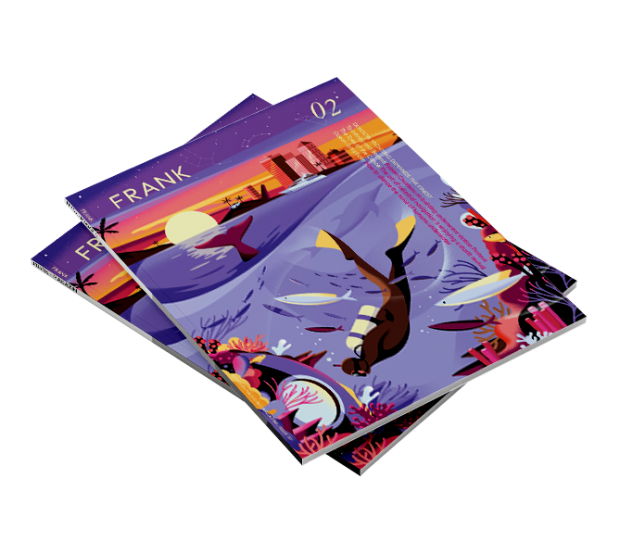
Request A Copy
